Commonly referred to as Blue Douglas Fir, Doug Fir, or Douglas Spruce, this towering evergreen belongs to the Pinaceae family. Despite its name, the Douglas Fir is neither a true fir, pine, nor spruce but holds its own unique place among conifers. Native to a vast range stretching from Southeast Alaska and British Columbia down to California and Mexico, this woody species is a defining feature of forests in the Pacific Northwest.
Renowned for its impressive height and resilience, the Douglas Fir is highly valued for its ornamental beauty, lumber, and role in reforestation. If you’re considering adding this majestic tree to your landscape or simply want to learn how to care for it, this guide covers essential details about its growth, care, and unique characteristics.
| Common name | Blue Douglas Fir, Doug Fir, Douglas Fir, Douglas-fir, Douglas Spruce |
| Botanical name | Pseudotsuga menziesii |
| Family | Pinaceae |
| Species | menziesii |
| Origin | Southeast Alaska, British Columbia to West Central CA, to Mexico |
| Life cycle | Woody |
| Plant type | Tree |
| Hardiness zone | 4, 5, 2006 |
| Sunlight | Full Sun |
| Maintenance | High |
| Soil condition | High Organic Matter |
| Soil ph | Acid |
| Drainage | Well-Drained |
| Growth rate | Medium |
| Spacing | 24 – 60 ft. |
| Harvest time | Summer |
| Flowering period | Spring |
| Height | 4- 80 ft. |
| Flower color | Gold, Yellow |
| Leaf color | Blue |
| Fruit color | Brown, Copper |
| Stem color | Brown, Copper |
| Leaf benefit | Fragrant |
| Garden style | Butterfly Garden |
| Uses | Woodland |
I. Appearance and Characteristics
The Douglas fir (Pseudotsuga menziesii) is an evergreen conifer species in the pine family, Pinaceae. It is native to western North America and is also known as Douglas-fir, Douglas spruce, Oregon pine, and Columbian pine. There are three varieties: coast Douglas-fir (P. menziesii var. menziesii), Rocky Mountain Douglas-fir (P. menziesii var. glauca) and Mexican Douglas-fir (P. menziesii var. lindleyana).
Despite its common names, it is not a true fir (genus Abies), spruce (genus Picea), or pine (genus Pinus). It is also not a hemlock; the genus name Pseudotsuga means “false hemlock”.
Douglas-firs are medium-size to extremely large evergreen trees, 20–100 metres (70–330 feet) tall (although only Pseudotsuga menziesii var. menziesii, common name coast Douglas-firs, reach heights near 100 m) and commonly reach 2.4 m (8 ft) in diameter, although trees with diameters of almost 5 metres (16 feet) exist. The largest coast Douglas-firs regularly live over 500 years, with the oldest specimens living for over 1,300 years. Rocky Mountain Douglas-firs, found further to the east, are less long-lived, usually not exceeding 400 years in age.
There are records of former coast Douglas-firs exceeding 120 metres (390 feet) in height, which if alive today would make it the tallest tree species on Earth. Some particular specimens that exceeded 400 feet tall were the Lynn Valley Tree and the Nooksack Giant.

The leaves are flat, soft, linear needles 2–4 centimetres (3⁄4–1+1⁄2 in) long, generally resembling those of the firs, occurring singly rather than in fascicles; they completely encircle the branches, which can be useful in recognizing the species. As the trees grow taller in denser forest, they lose their lower branches, such that the foliage may start as high as 34 m (110 ft) off the ground. Douglas-firs in environments with more light may have branches much closer to the ground.
The bark on young trees is thin, smooth, grey, and contains numerous resin blisters. On mature trees, usually exceeding 80 years, it is very thick and corky, growing up to 36 cm (14 in) thick with distinctive, deep vertical fissures caused by growth. Layers of darker brown bark are interspersed with layers of lighter colored, corky material. This thickness makes the Douglas-fir perhaps the most fire-resistant tree native to the Pacific Northwest.
The female cones are pendulous, with persistent scales, unlike those of true firs. They have distinctive long, trifid (three-pointed) bracts which protrude prominently above each scale and are said to resemble the back half of a mouse, with two feet and a tail. The cones are tan when mature, measuring 6–10 cm (2+1⁄2–4 in) long for coastal Douglas-firs and a couple of centimetres shorter inland.
The massive mega-genome of Douglas fir was sequenced in 2017 by the large PineRefSeq consortium, revealing a specialized photosynthetic apparatus in the light-harvesting complex genes.
II. How to Grow and Care
Sunlight
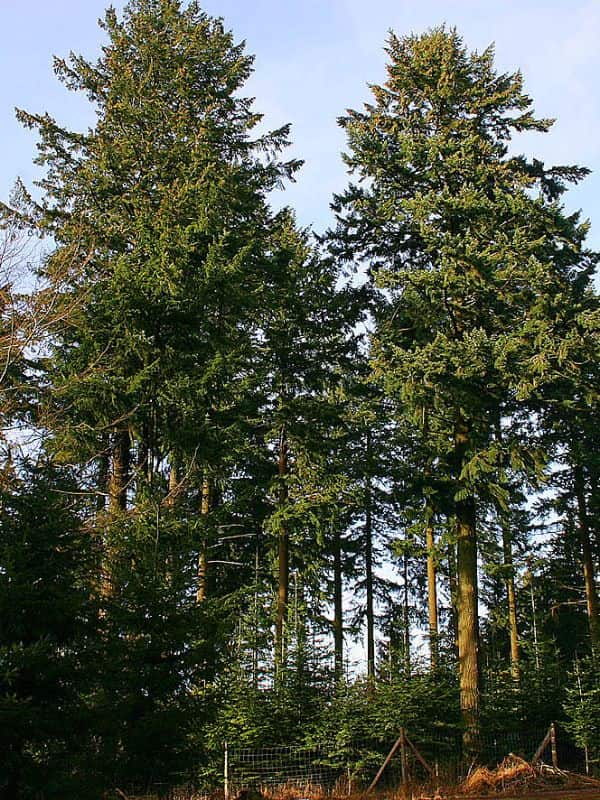
Common douglas-fir thrives best under full sun conditions, receiving unfiltered sunlight for at least 6 hours a day. It possesses high adaptability, tolerating partial sun with some light shade, though this might slightly compromise its growth vigor and density. Adapting to varying light levels, common douglas-fir can show adjustments in foliage density and orientation to maximize light absorption.
When grown outdoors, common douglas-fir should be placed in a location with clear exposure to the sky, ideally away from taller structures or trees that could significantly block sunlight. Its robust nature accommodates a range of outdoor environments, but optimal light availability is crucial for its health and growth.
Watering
Originating from moist forest environments, common douglas-fir has adapted to thrive with moderate moisture levels. This species exhibits a preference for consistent humidity and is moderately drought-tolerant. Watering practices should mimic its natural habitat, equating to once every 1-2 weeks. Typically found outdoors, common douglas-fir benefits from the seasonal rainfall patterns that align with its growth cycles, ensuring optimal hydration during key developmental phases.
Fertilizing
To foster robust growth in common douglas-fir, apply a balanced nutrition fertilizer annually, ideally in early spring before new growth starts. Benefits include improved health and vigor. Use fertilizer according to its label, avoiding over-fertilization which can harm common douglas-fir. During the active growing season, lighter, more frequent feedings may be beneficial. Always water common douglas-fir thoroughly after fertilizing to facilitate nutrient uptake. For young common douglas-fir, more nitrogen-rich mixes support growth, switching to phosphorus and potassium as common douglas-fir matures to encourage root and shoot development.
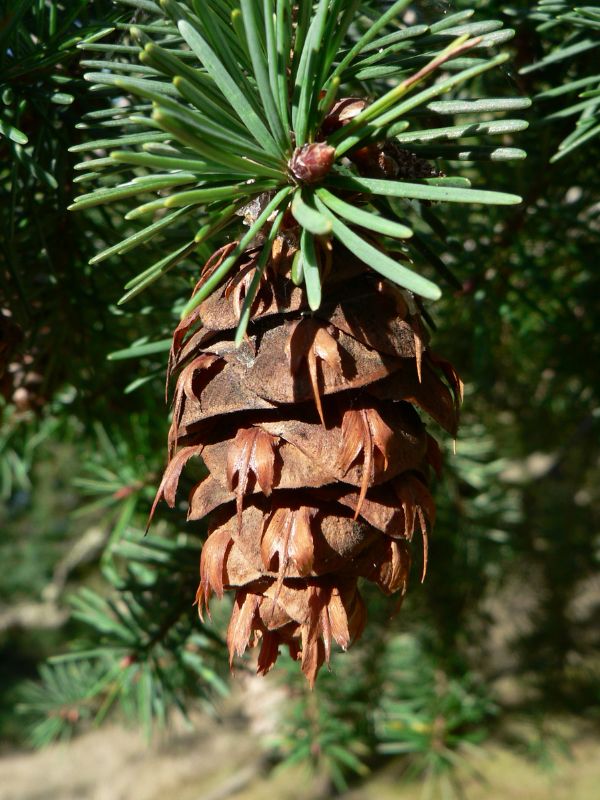
Planting Instructions
Before you start growing Douglas firs, you’ll need to find a good planting location. They grow best in areas with cold winters and hot summers in USDA plant hardiness zones 4 through 6. When you are planting a Douglas fir, be sure to cite the tree in an area with excellent drainage. Even the best Douglas fir tree care will not enable this evergreen to thrive in poorly drained soils. Douglas fir tree care includes providing irrigation in the summer. You’ll need to water between one and four times each month, depending on rainfall and how the soil holds water. You’ll do best planting a Douglas fir tree in a shady area. Either part shade or full shade will work fine. Be certain that the soil is deep, moist, and well-drained. Once the tree is established, Douglas fir tree care is minimal. The tree is drought-tolerant and can thrive in areas with only16 inches (41 cm.) of precipitation annually.
Transplanting
The ideal season to transplant common douglas-fir is from mid-spring to late spring or mid-winter to late winter, allowing roots to establish before seasonal growth. Ensure the transplant location has well-drained soil and partial to full sunlight. Gently tease the root ball when transplanting, if needed, to encourage healthy growth.
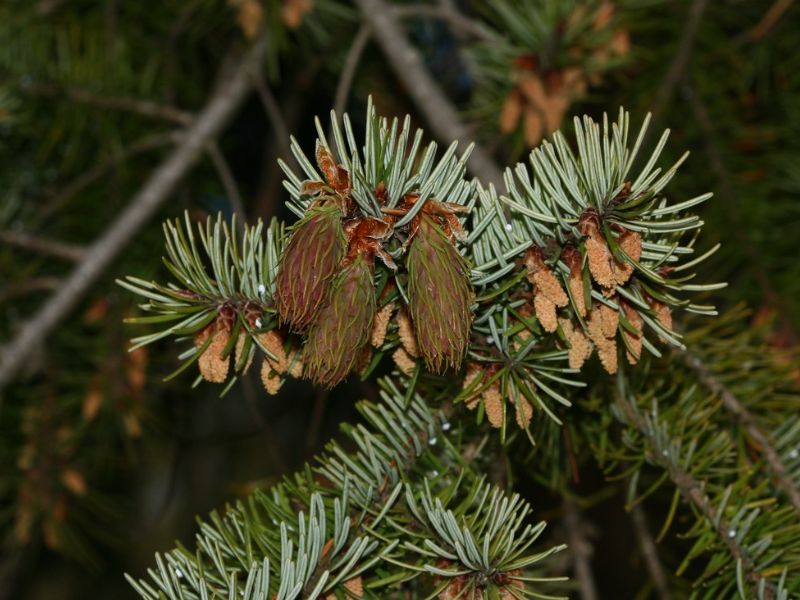
III. Uses and Benefits
Many different Native American groups used the bark, resin, and needles to make herbal treatments for various diseases. British Columbia’s Bella Coola tribe mixed the resin with dogfish oil for many medicinal applications. Some tribes used the foliage as a hygienic freshener in sweat baths, and the leaves were used as a coffee substitute. Native Hawaiians built waʻa kaulua (double-hulled canoes) from coast Douglas-fir logs that had drifted ashore.
The wood has historically been favored as firewood, especially from the coastal variety. In addition early settlers used Douglas fir for all forms of building construction, including floors, beams, and fine carving. Even today much of the Northwest chain saw art is completed on Douglas fir logs. The structures built from fir have lasted 150 years and more.
The species is extensively used in forestry management as a plantation tree for softwood timber. Douglas-fir is one of the world’s best timber-producing species and yields more timber than any other species in North America, making the forestlands of western Oregon, Washington, and British Columbia the most productive on the continent. In 2011, Douglas-fir represented 34.2% of US lumber exports, to a total of 1.053 billion board-feet. Douglas fir timber is used for timber frame construction and timber trusses using traditional joinery, veneer, and flooring due to its strength, hardness and durability. As of 2012, the only wooden ships still currently in use by the U.S. Navy are Avenger-class minesweepers, made of Douglas-fir.
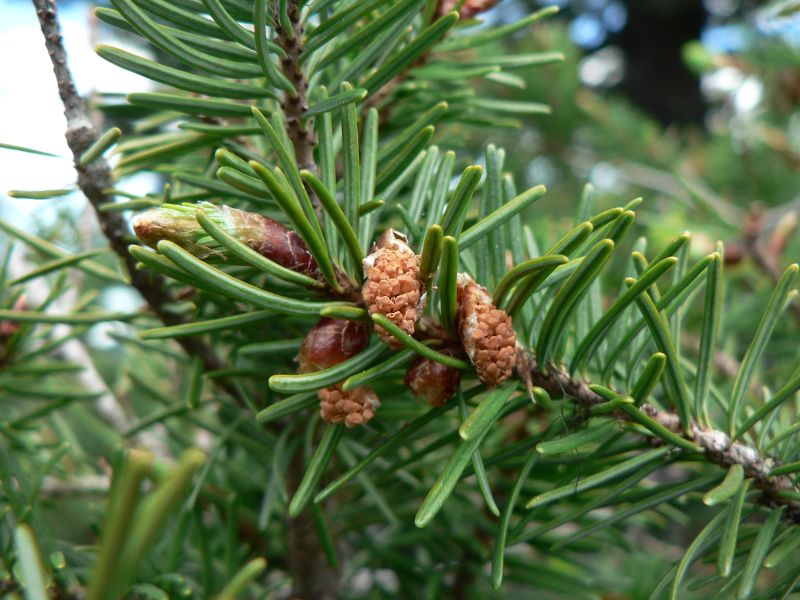
Douglas fir sees wide use in heavy timber structures, as its wood is strong, available in a number of specifications including kiln dried and grade stamped, and can be supplied in very long lengths to 60 feet. West coast mills are sophisticated in their processing of timbers, making lead times predictable and availability reliable. Paints adhere well to Douglas fir.
Stains perform well on Douglas fir timbers with the mild caution that the natural color of this species varies and care must be taken to ensure uniformity of color. Pitch pockets that may ooze resin can be present in timbers that have not been kiln dried. Because of the timber sizes available, stamped timber grading, and relatively short lead times, Douglas fir sees wide use in both public and residential projects.
The species has ornamental value in large parks and gardens. It has been commonly used as a Christmas tree since the 1920s, and the trees are typically grown on plantations.
The buds have been used to flavor eau de vie, a clear, colorless fruit brandy. Douglas-fir pine leaves can be used to make pine needle tea. They possess a tangy citrus flavor and may serve in some recipes as a wild substitute for rosemary.
Find Where to Buy the Best Doug Fir (Pseudotsuga menziesii)
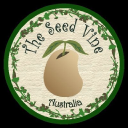


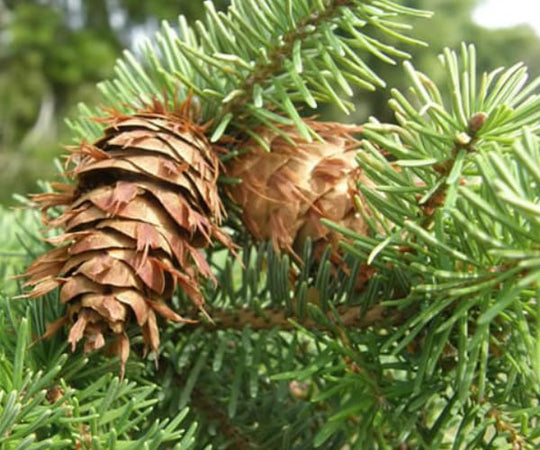

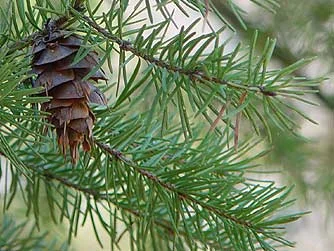

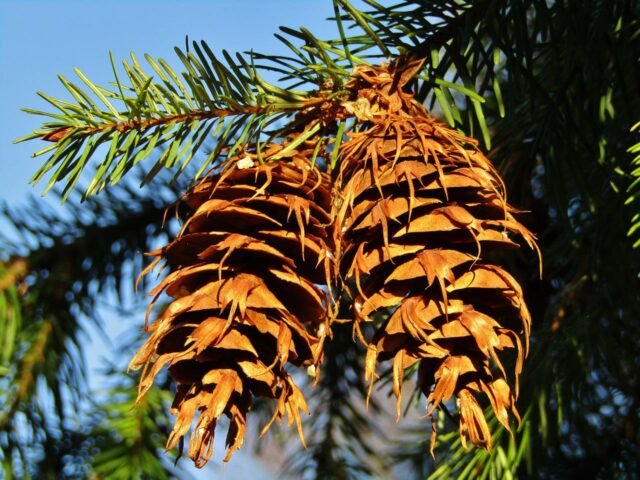










Leave a Reply